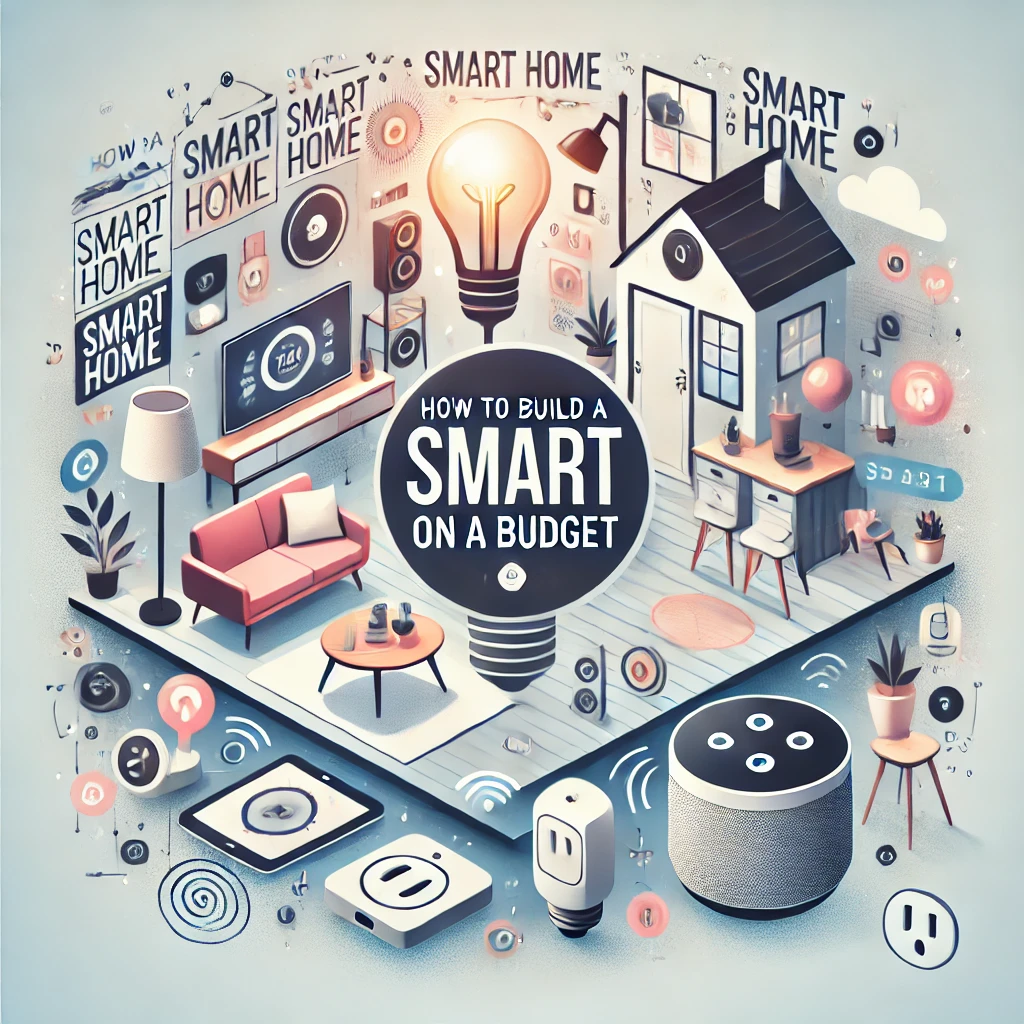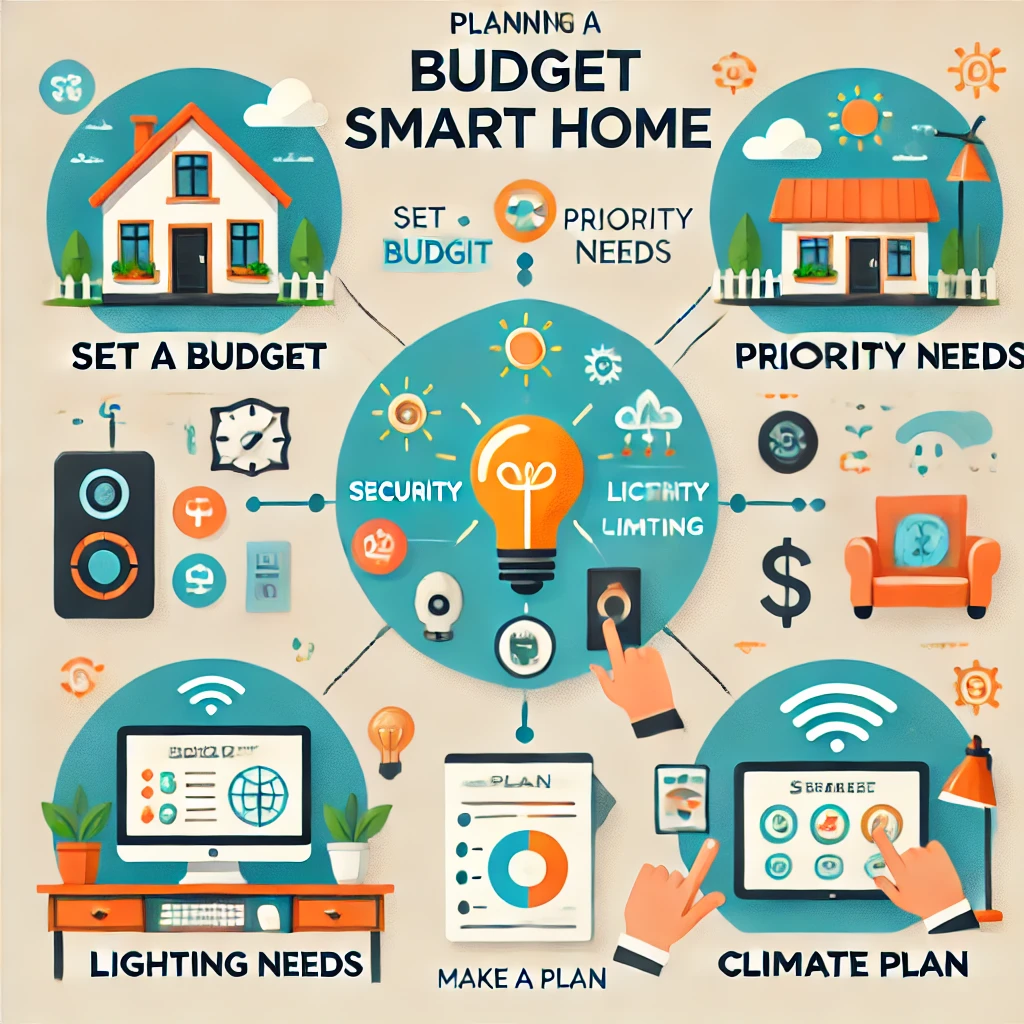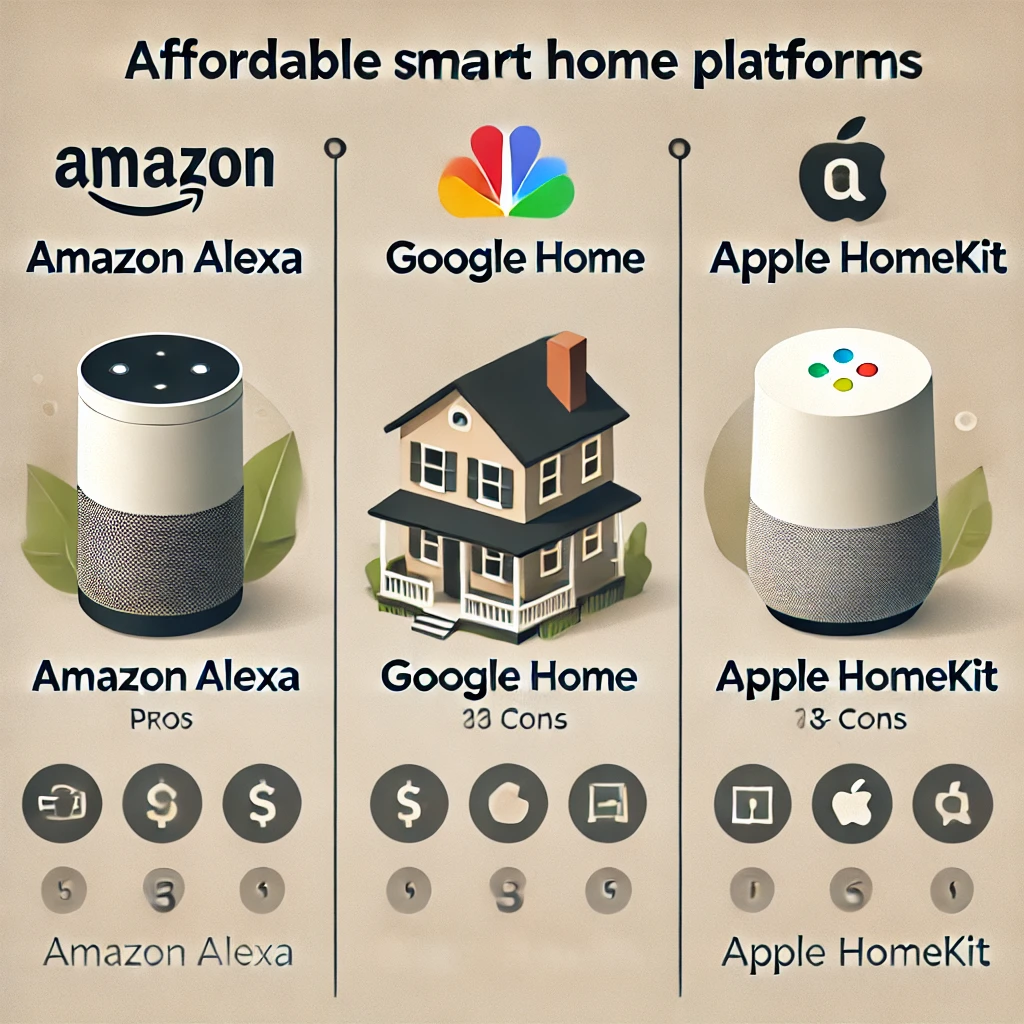Introduction
Welcome to the world of smart home automation! If you’ve ever dreamed of transforming your house into a high-tech, automated haven but were put off by the potential cost, this guide is for you. Contrary to popular belief, building a smart home doesn’t have to break the bank. With the right approach and careful planning, you can create an efficient, convenient, and modern living space without spending a fortune.
Smart home automation offers a myriad of benefits, from enhanced security and energy efficiency to increased convenience and comfort. Imagine controlling your lights, thermostat, security system, and even your coffee maker with a simple voice command or a tap on your smartphone. This guide will show you how to achieve these benefits on a budget, making smart home technology accessible to everyone.
Planning Your Budget Smart Home
Setting a Budget and Prioritizing Needs
Before diving into the world of smart home devices, it’s crucial to set a budget and prioritize your needs. Here’s how you can do it:
- Determine Your Budget: Decide how much you’re willing to spend on your smart home setup. It’s important to be realistic and consider both initial costs and potential ongoing expenses (such as subscriptions for certain services).
- Prioritize Key Areas: Identify which areas of your home you want to automate first. Common priorities include:
- Security: Smart locks, cameras, and sensors to keep your home safe.
- Lighting: Smart bulbs and switches for convenience and energy savings.
- Climate Control: Smart thermostats to maintain comfort and efficiency.
- Entertainment: Smart speakers and streaming devices for enhanced home entertainment.
- Make a Plan: Create a list of the devices you want to start with and the order in which you’ll purchase and install them. This will help you stay focused and avoid overspending.
Affordable Smart Home Devices

Building a smart home on a budget doesn’t mean compromising on quality. Many affordable smart home devices offer excellent functionality and reliability. Here’s an overview of some budget-friendly options:
Smart Plugs
Smart plugs are a cost-effective way to start automating your home. They allow you to control any plugged-in device remotely. Simply plug them into a standard outlet and connect to your Wi-Fi network.
- Uses: Automate lamps, coffee makers, fans, and other appliances.
- Price Range: $10-$30 per plug.
- Recommendation: Amazon Budget Smart Home Devices
Smart Bulbs
Smart bulbs replace your existing light bulbs and can be controlled via a smartphone app or voice commands. They’re easy to install and offer features like dimming and color-changing.
- Uses: Control lighting in any room, set schedules, and create ambiance.
- Price Range: $10-$20 per bulb.
- Recommendation: Amazon Budget Smart Home Devices
Affordable Smart Speakers
Smart speakers, like Amazon Echo Dot and Google Nest Mini, serve as the central hub for many smart home systems. They provide voice control for various devices and access to smart assistants.
- Uses: Control smart home devices, play music, get weather updates, and more.
- Price Range: $25-$50 per speaker.
- Recommendation: Amazon Budget Smart Home Devices
Basic Security Cameras
Smart security cameras are a great way to enhance home security on a budget. They offer features like live streaming, motion detection, and alerts.
- Uses: Monitor your home remotely, receive alerts for suspicious activity.
- Price Range: $30-$70 per camera.
- Recommendation: Amazon Budget Smart Home Devices
Choosing a Budget-Friendly Smart Home Platform

Selecting the right smart home platform is essential for seamless integration and control of your devices. Here are some popular and budget-friendly options:
Amazon Alexa
Amazon Alexa is a versatile and widely supported smart home platform. It’s compatible with a vast range of devices and offers a user-friendly experience.
- Pros:
- Extensive device compatibility.
- Affordable smart speakers (e.g., Echo Dot).
- Easy setup and use.
- Cons:
- Limited to Amazon’s ecosystem for some features.
- Privacy concerns related to voice data.
Google Home
Google Home, powered by Google Assistant, is another popular choice for smart home automation. It offers excellent integration with Google services and a growing list of compatible devices.
- Pros:
- Integration with Google services (e.g., Google Calendar, Gmail).
- Affordable smart speakers (e.g., Google Nest Mini).
- Strong voice recognition capabilities.
- Cons:
- Device compatibility is slightly less extensive than Alexa.
- Privacy concerns similar to other voice assistants.
Apple HomeKit
Apple HomeKit is ideal for users deeply invested in the Apple ecosystem. It provides seamless integration with iOS devices and a focus on privacy and security.
- Pros:
- Strong focus on privacy and security.
- Seamless integration with iOS devices.
- Reliable performance.
- Cons:
- More expensive initial investment (HomePod, Apple devices).
- Limited device compatibility compared to Alexa and Google Home.
Step-by-Step Guide to Building Your Budget Smart Home
Setting Up a Basic Smart Home System on a Budget
- Unbox and Inspect Your Devices:
- Start by unboxing your smart home devices and inspecting them to ensure all components are present and undamaged.
- Set Up the Smart Home Hub:
- Follow the manufacturer’s instructions to set up your smart home hub (e.g., Amazon Echo, Google Nest, Apple HomePod).
- Connect the hub to your Wi-Fi network and download the corresponding app on your smartphone.
- Connect Smart Devices:
- Using the app, follow the instructions to connect each smart device to your hub. This process typically involves powering the device, putting it into pairing mode, and adding it through the app.
- Create Automation Rules:
- Once all your devices are connected, create automation rules and schedules. For example, set your lights to turn on at sunset or your thermostat to adjust the temperature based on your daily routine.
- Test Your Setup:
- Test each device and automation rule to ensure everything is working as expected. Make any necessary adjustments to improve performance and reliability.
Troubleshooting Common Issues
- Connectivity Issues:
- Ensure your devices are within range of your Wi-Fi router and that your network is stable. Restart your router and devices if needed.
- Device Pairing Problems:
- Make sure the device is in pairing mode and that you’re following the correct steps. Reset the device and try again if necessary.
- Automation Rules Not Working:
- Double-check your automation rules and schedules in the app. Ensure that the conditions and triggers are set correctly.
DIY Projects for Budget Smart Homes
Simple and Affordable DIY Projects
Here are some popular DIY home automation projects that are perfect for budget-conscious beginners:
- Automated Lighting:
- Set up smart bulbs that can be controlled remotely or set on schedules. For example, automate your living room lights to turn on at sunset and off at bedtime.
- Smart Thermostat Schedule:
- Install a smart thermostat and create a schedule that adjusts the temperature based on your daily routine. This can help save energy and improve comfort.
- Smart Security Camera:
- Install a smart security camera at your front door to monitor activity and receive alerts for any suspicious movements.
Step-by-Step Instructions
Project 1: Automated Lighting
- Install Smart Bulbs:
- Replace your existing light bulbs with smart bulbs. Follow the manufacturer’s instructions for installation.
- Pair with Hub:
- Use the app to pair the smart bulbs with your smart home hub.
- Create Schedules:
- Set up schedules in the app to automate your lighting based on time of day or occupancy.
Project 2: Smart Thermostat
- Turn Off Power:
- Turn off the power to your existing thermostat at the breaker.
- Remove Old Thermostat:
- Carefully remove your old thermostat and take note of the wiring.
- Install Smart Thermostat:
- Follow the manufacturer’s instructions to install and wire the new smart thermostat.
- Pair with Hub:
- Pair the thermostat with your smart home hub using the app.
- Set Schedules:
- Create temperature schedules in the app to optimize energy use and comfort.
Maximizing Value with Budget Smart Home Devices
Tips for Getting the Most Out of Your Devices
- Use Automation Rules:
- Take advantage of automation rules and schedules to maximize convenience and energy savings.
- Integrate with Other Services:
- Integrate your smart home devices with other services (e.g., IFTTT) to create more complex automation rules and scenarios.
- Regular Maintenance:
- Perform regular maintenance on your devices, such as updating firmware and replacing batteries, to ensure optimal performance.
Finding Deals and Discounts
- Shop Sales:
- Look for sales and discounts on smart home devices during major shopping events like Black Friday, Cyber Monday, and Amazon Prime Day.
- Buy Refurbished:
- Consider purchasing refurbished devices from reputable sellers to save money without sacrificing quality.
- Use Cashback and Rewards:
- Take advantage of cashback offers and rewards programs when purchasing smart home devices.
Gradually Expanding Your Smart Home System
- Start Small:
- Begin with a few essential devices and gradually add more as you gain confidence and experience.
- Research Compatibility:
- Ensure new devices are compatible with your existing smart home hub and platform.
- Prioritize Needs:
- Focus on areas where automation can bring the most benefit, such as security, energy efficiency, or convenience.
Conclusion
Building a smart home on a budget is not only possible but also incredibly rewarding. By prioritizing your needs, choosing affordable devices, and taking advantage of sales and discounts, you can create a connected and automated living space without spending a fortune.
Remember, starting small and gradually expanding your system is key to a successful budget smart home. Don’t hesitate to explore new devices and projects as you become more comfortable with the technology.
Ready to get started? Check out our recommended budget smart home devices on Amazon and begin transforming your home today!
Happy automating!


